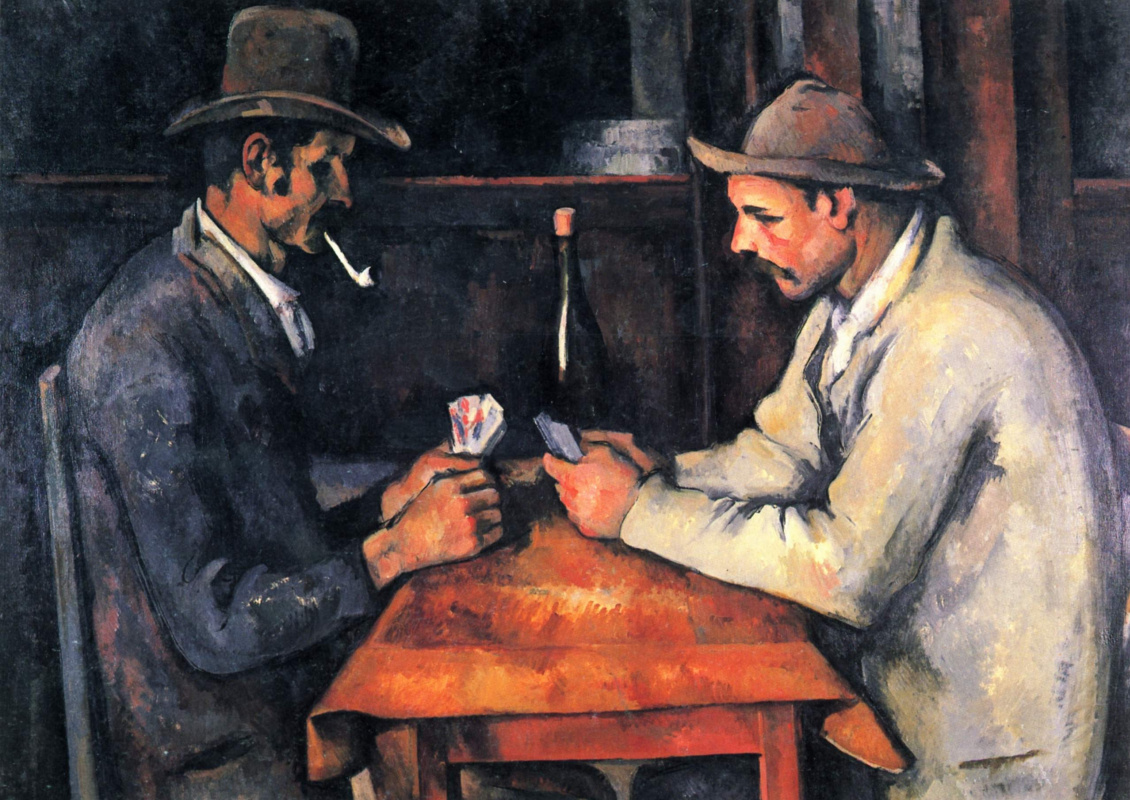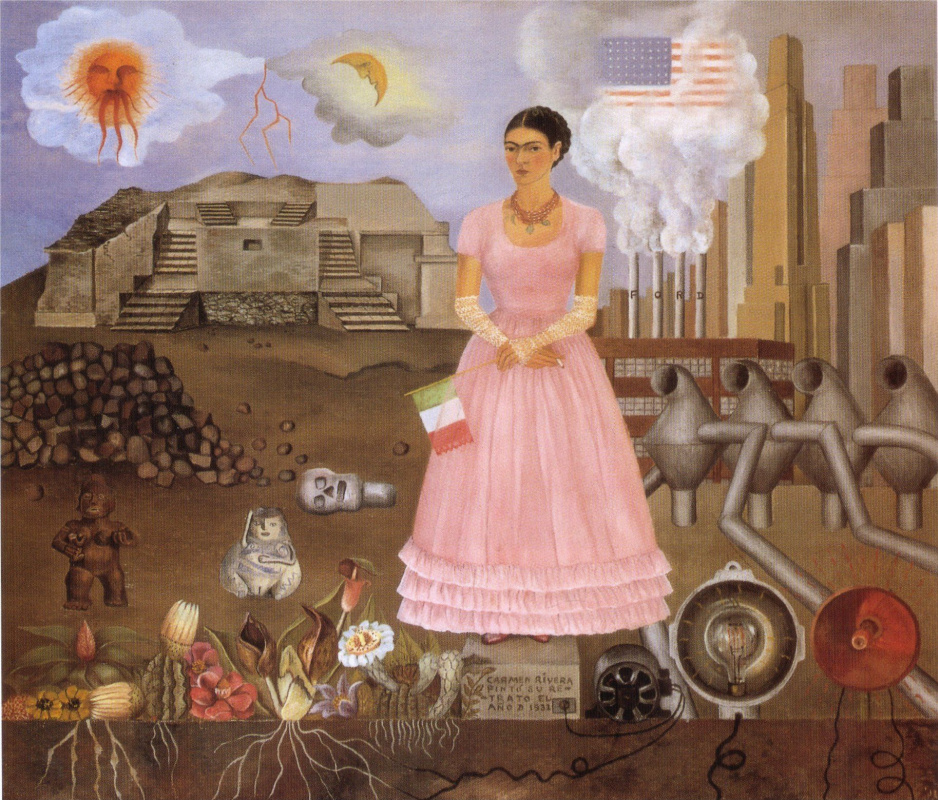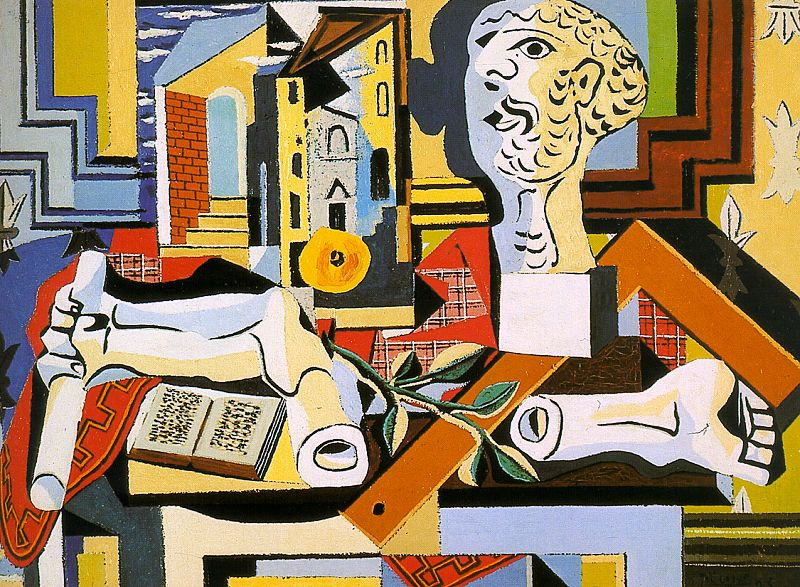
Why do we even need painting when photography has long been invented?
If you imagine the whole history of painting from the very first drawings on the walls of caves to modern abstract works, only a tiny part of the total number of paintings created by artists are realistic (or rather, even naturalistic) images. Sure thing, before the invention of photography, artists were sometimes used as masters who could record the appearance of someone’s beloved granny for posterity or depict the baby’s golden curls before it grew up and went bald.But the main goal of art is not to repeat the world around us, but to create a new world, connected and not connected with the real one. It is strange to assume that a piece of music should imitate the sounds of birds singing or the noise of a train station. Neither should painting be a copy of reality.
Why are paintings so expensive (they are not an apartment, not a car, not an iPhone)?
Paintings are evaluated according to a number of criteria. The price depends not only on the popularity of the artist’s name, but also on the period of their life the work belongs to, stories and adventures (quite so!) it participated in, significance it had at the time of its creation, and the way it influenced the history of art.Most paintings in museums are truly priceless. It’s difficult to come up with a price tag in any currency that could be attached to Leonardo da Vinci's La Gioconda or Liberty Leading the People by Eugène Delacroix. These paintings are not sold or bought, because they are symbols and landmarks. For example, nobody in their right mind would try to sell the Statue of Liberty or the Eiffel Tower, simply by calculating the price of the materials used to make them. And not only because they are huge — it’s just after losing such structures, the countries would immediately become poorer, fade, and lose their unique, instantly recognizable symbols.
But those paintings that can be evaluated are of particular value. This, of course, is a profitable investment, hence in 10, and even more so 50 years, the same picture may cost 10 times more. This is definitely not an iPhone, which will become out-of-date after 2 years. Still, profit isn’t always the only thing collectors care about. Very often, they bequeath their paintings to museums, universities where they used to study, or charitable organizations. The main value of a painting is historical, aesthetic, and finally, image-building. People who buy a great picture for a huge amount of money become an object of discussion and acquire a special reputation. But they also shoulder an enormous responsibility: now they will have to provide the painting with suitable care and perfect placement in their house so that it does not die from bright sunlight or humidity.
Why did some artists become great, while the others were forgotten?
Great artists are similar to great inventors or discoverers: it is difficult for them to continue living in the old style after their discovery. They change the world and change the way a person or even the whole mankind views that world. You can stubbornly use a typewriter and change its tape once a month, but soon the tape will disappear from the sale, because everyone has long been typing on their computers. You may not recognize the discovery of the New World, but soon potatoes, tobacco and a wonderful cure for malaria will be brought from there — and you will have no choice but to accept the new way of living. Or die of malaria.People don’t like sudden changes. It takes time to embrace them. Therefore, great innovative artists were rarely recognized as great immediately. For example, when one of the great reformers of art, Édouard Manet, began to paint scenes from ordinary life, and not subjects that were popular at that time (those with Venus, cupids and other faceless cloying gods), his paintings were refused to be displayed at the exhibitions and were considered vulgar. And when his paintings managed to get to the exhibitions, the audience literally spat on those works and tried to make a hole in them.
But even at that time, Manet had admirers who understood the importance of the revolution that he started in painting. Those were other artists, writers, poets, and journalists. Many people followed his ideas — and painting finally changed. After some 30 years, it was already ridiculous to seriously paint Venus lying on a cloud.
Isn't being a great artist quite disappointing – you don’t get paid a lot during your life, and when you die, your paintings are sold for a whole lot of money?
It’s a popular misconception. Artists who didn’t die tragically at a young age most often gained recognition during their lifetime. Of course, they didn’t become millionaires, but still were much richer than any famous doctor or notary. Sure thing, some artists were not understood until the end of their lives. Vincent van Gogh and Alfred Sisley died poor, but they never stopped painting and believed in what they were doing. They didn’t have the charm and perseverance of Monet or the wit and secular manners of Degas. That might be the reason.It also happened that some recognized artists were forgotten for 100 or even 300 years, and then suddenly their paintings became very relevant, corresponding to the moods and tastes of the new era — and critics, art historians, and viewers no longer understood how they could do without those works for so long. For example, Jan Vermeer's Girl with a Pearl Earring was forgotten for almost a hundred years, but now it’s hard to find a person who has never seen it. Or the Impressionist artist Gustave Caillebotte was called a philanthropist and collector for almost a hundred years, despite the fact that he himself was an important painter. Now, not a single conversation about impressionism can do without his Les raboteurs de parquet (The Floor Scrapers) or Paris Street; Rainy Day.
In any case, the importance of the artist is evaluated over time. Because only with the change of epochs, tastes, fashion, technology, speed and style of life can one understand whether artists only fulfilled the requirements of their time or were able to create paintings that could inspire admiration in viewers leading a completely different lifestyle. And every artist who chose this way of earning their living knew perfectly well about this law. Some artists were collectors themselves and spent a lot of money on paintings by their great predecessors. Edgar Degas, for example, felt sick at heart when the prices of his paintings went up. He was afraid that if his works were so expensive, then he would not be able to buy paintings by his beloved Delacroix or Ingres — because then they would become even more expensive.
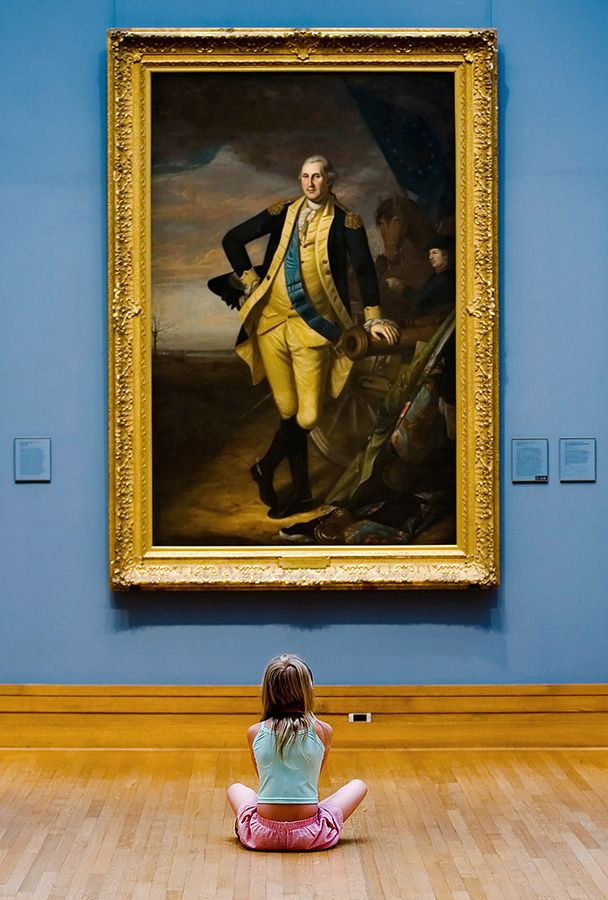
Why go to the museum if you can find all the paintings on the Internet?
The Internet is a very useful thing for anyone who wants to learn more about art. Often this is the only way to see some paintings, for there is only one original of each of them which is located in a particular museum of a particular city. Not everyone can go to New York to visit the famous Museum of Modern Art, or to Paris to get to the Louvre. It’s much easier on the Internet — just look and enjoy.Yet, we will never agree to look at the pictures of the same New York or Paris on the Internet instead of taking a walk in those cities. Painting is no different. Therefore, people often include famous museums in tourist routes.
People who saw some paintings on the Internet are most often taken aback by their size when seeing them live. We all have almost the same computer screens. Which one do you have? 20×30cm? 30×40cm? And suddenly it turns out that The Last Supper by Leonardo is a huge fresco that measures 460 cm x 880 cm. And Easter Monday by Willem de Kooning is a canvas measuring almost 2×2 meters, which makes every brush stroke and every splash of colour in this painting absolutely stunning. But Frida Kahlo's Self-Portrait Along the Boarder Line Between Mexico and the United States, which is quite scary when being looked at closely, turns out to be very tiny on the museum wall, which makes it look almost fantastic in its carved frame. It’s a little larger than a sheet of text-weight paper.
And of course, there’s colour. In painting, colour is a language. Using colours, the artist creates the mood, and often even the meaning. And it’s very rare that reproductions on the Internet render colours accurately. You are unlikely to want to read a good book in a terrible translation or watch a movie online with the Internet constantly disconnecting.
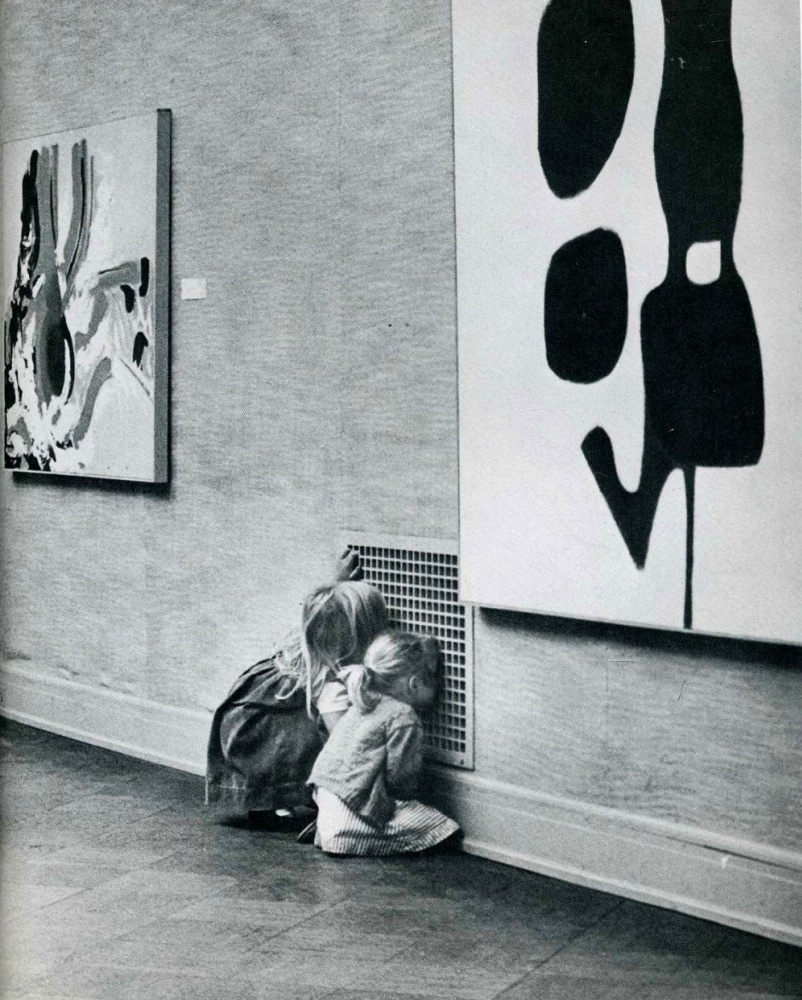
Is it possible to be a good person and not be interested in art at all?
Easily. You can be a brilliant physicist or an excellent programmer, a sought-after cook or an accomplished athlete — and at the same time have no interest in art whatsoever. It’s not something to worry about or be embarrassed of. Visual arts (just like music or literature) are first of all about pleasure. And it is impossible to make, convince, teach or force someone to experience pleasure.Sometimes the fascination with art begins with some small impression that may seem ridiculous to others. The main thing is to give art a chance. Be sure not to say or think something like: "this is definitely not for me; I will never understand it." You can see a beautiful concert poster while going up the escalator in the subway. And then spend a couple of hours trying to find the painting that was used while designing it. You can accidentally read the fascinating life story of an artist — and suddenly want to see their paintings.
Why do museums have guides? If you just look at the picture and know nothing about it and the artist, will you like it less?
A guide is not necessary at all, and meeting a really interesting storyteller who won’t lull you with their tour talks is really difficult. But if you’re lucky, you’ll definitely look at art in a different way. For example, just looking at the military paintings by Vasily Vereshchagin is one thing, but looking at them and finding out that the artist himself participated in the battles, received an order for heroism, lost his brother on the battlefield and hated war all his life — is completely different.In modern museums, themed exhibitions are often organized by specialists — curators. They select paintings, place them in the halls and even issue catalogues with the necessary information to help the visitors of the exhibition understand something about time, countries, or artists associated with the works exhibited. It’s much more interesting this way. It’s up to the visitors to decide when to look into the catalogue, if they are eager to learn more, and when looking at the picture alone is enough -everything is clear without additional explanation.
Some pictures are weird. Why did people agree to consider them great?
A picture may seem strange if you don’t fully understand what is happening in it. This is like a film for adults about obscure events in Japanese, which you suddenly began watching from the middle. But if you find the same movie translated and start watching it from the very beginning in a couple of years, it won’t seem that weird. This does not mean that you will immediately like it, but now you can confidently say: "I watched the whole film, understood everything, but did not feel anything special." It happens.Most often, viewers consider works of modern art to be strange — those in which there are no recognizable figures and which sometimes resemble children’s daub or those in which images consist entirely of geometric shapes. Viewers say that they don’t get them at all. But even if the figures of people and animals are very realistically conveyed in the picture and the landscape can be easily recognized, this does not mean that the work is simple and understandable. And that its meaning is easy to determine by simply analyzing the depicted scene. In order to understand the paintings created 400−500 years ago (very realistically painted, by the way), one has to study myths, read the Bible, learn about the symbols and allegories prevailing at that time, and about historical events. Or use the help of the museum guide and read articles on Arthive.

And finally, let’s get back to the general agreement of whether to consider something great or not. How did people agree to consider Edison, the man who invented the electrical lighting system, great? By the way, many artists of the late 19th — early 20th centuries did not recognize electric lighting and refused to artificially light their workshops. You may like or dislike the cubist paintings by Pablo Picasso, just the way many didn’t like the electric light, but you have to admit that people began to look at the world differently after the appearance of cubism. Even cartoons became different. It is possible that there would be no Lego and Minecraft without cubism. Seriously.
The illustration above: a scene from the cartoon "Forgetful Giovanni"
Why painting ugly stuff? Who would want to look at it?
Not only an artist, but also any person is a complex creature with their own view of the world. They could be in despair, feel lonely or confused. And the world around the artist could be completely different at the time the painting was created. There was a war going on, or they lost their friend. They could be surrounded by injustice, meanness, or cowardice. There were entire generations of artists who were greatly worried about what was happening (on the eve of World War I in Europe or during the Great Depression in the USA) — and simply could not paint beautiful flowers or well-dressed women.And then, in a hundred years, someone on the other side of the world would be able to look at the disturbing paintings of these artists — and experience the same thing. Sometimes a hall with a dozen paintings created in the difficult pre-war time makes you feel much more than a thick history book.
If I paint a daub, will it be exhibited in some museum?
It most likely won’t. Even if it is not a daub, but a fairly decent still life or landscape, created during the lesson at an art school.By the way, at the beginning of the 20th century, there was an association of artists who called to pay attention to children’s drawings and even included some of them in Der Blaue Reiter (The Blue Rider) Almanac, which they published. They also admired the primitive art of the peoples of Africa and Oceania, and the works of mentally disordered people. It was necessary that people ceased to trust so much the technical skill of the artists, their ability to apply paint correctly — and learned to see important thoughts, feelings, experiences and expressiveness even in several strokes of paint or in a flat image devoid of volume and perspective.
An artist who at some stage of their life begins to create simple, "child-like" works definitely knows how to paint realistically. All that delicate lace which looks real and sea waves which are about to splash out of the space of the painting right under the feet of the viewers. But they deliberately refuse to do it — and choose the method of depiction, which is likely to cause indignation, opposition, misunderstanding, and ridicule. And they know exactly why they do it. This distinguishes the work of the artist from the drawing of a child who simply hasn’t learned yet how to draw in a different way.






